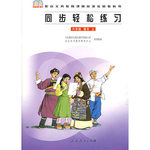题目内容
Every child has written their names on the beach at some point.
But whereas most people’s “handwriting” is washed away, one super-rich Arab sheikh(酋长) has ensure that his graffiti(胡写乱画) will last a little longer.
Hamad Bin Hamdan Al Nahyan, 63, has scrawled his name in sand on an island he owns with letters so big that they be seen from space.
The word “HAMAD” measures 1,000 meters high and is a staggering two miles long from the “H” to the “D” on the Al Futaisi Island.
And rather than allow the writing to be washed away by the ocean, the letters actually form waterways that absorb the encroaching(渗入) tide. The ruler’s name is even visible on Google’s map service.
Hamad dreamed up the idea and had his workmen work hard for weeks to craft the enormous piece of sand graffiti. It is not known how much it cost to make.
However, the sheikh boasts a personal fortune second to the Saudi king’s.
Hamad, also known as the “Rainbow Sheikh”, is a member of the Abu Dhabi Ruling Family.
He is understood to have some 200 cars including seven Mercedes 500 SELs painted in different colors of the rainbow which he stores in a giant pyramid.
The Arab sheikh had a taste for doing things on a large scale. He built the world’s largest truck—eight times the size of the Dodge Power Wagon, with four bedrooms inside the cabin.
Hamad constructed a motor home in the shape of a giant globe which is exactly 1 millionth the size of the actual earth.
Alongside his displays of wealth he has become a well-known philanthropist(慈善家) in medicine and supplied a complete Kinney stone operating theatre to a public hospital in Morocco where he continues to fund its stuff.
- 1.
Which of the following in NOT true according to the passage?
- A.Hamad is a man who wants himself to be well-known from apace.
- B.Hamad is a super-rich person who always does something unusual.
- C.Hamad is a man who is always so mean in his family
- D.Hamad is a man who boasts his fortune is second to the Saudi king’s
- A.
- 2.
In what way could Hamad make his handwriting last longer?
- A.The word “HAMAD” measures 1,000 meters wide and high.
- B.The word “HAMAD” is a staggering two miles long from the “H” to the “D”.
- C.The word “HAMAD” actually forms huge waterways that absorb the encroaching tide.
- D.The word “HAMAD” cost his workmen a lot of hard work for several weeks.
- A.
- 3.
Why does Hamad have his seven Mercedes-Benz500 SELs painted in different colors?
- A.Perhaps he hoped his cars were stored in a giant pyramid safely.
- B.In some ways he could make a very strange rainbow.
- C.Maybe he just wanted to show off his wealth.
- D.He is always interested in making his cars like these.
- A.
- 4.
Which of the following might be the best title for the passage?
- A.The Rainbow Sheikh’s name can be seen from space
- B.The richest Arab sheikh’s name has made many funny things
- C.A great person likes doing things on a large scale
- D.A well-known philanthropist displays his wealth
- A.
CCCA
本文讲述的是一位酋长为了使自己在沙滩上写下的名字不被冲掉采取了一些措施,并且这个名字可能在太空也能看见。同时讲述了这位酋长的其他方面的事情,表明他既爱炫富,但又能做慈善。
1.C 细节判断题。根据最后一段可知,这个人还是一个大慈善家,故C项是错误的。
2.C 细节题。根据rather than allow the writing to be washed away by the ocean, the letters actually form waterways that absorb the encroaching(渗入) tide.可知答案为C。
3.C 推断题。根据最后一段第一句话,可知他喜欢炫耀自己的财富,故答案为C。
4.A概括主旨大意题。本文以较多的笔墨写他在沙滩上写下自己的名字,为了保证不被冲掉,采取了一些措施,故答案为A。
本文讲述的是一位酋长为了使自己在沙滩上写下的名字不被冲掉采取了一些措施,并且这个名字可能在太空也能看见。同时讲述了这位酋长的其他方面的事情,表明他既爱炫富,但又能做慈善。
1.C 细节判断题。根据最后一段可知,这个人还是一个大慈善家,故C项是错误的。
2.C 细节题。根据rather than allow the writing to be washed away by the ocean, the letters actually form waterways that absorb the encroaching(渗入) tide.可知答案为C。
3.C 推断题。根据最后一段第一句话,可知他喜欢炫耀自己的财富,故答案为C。
4.A概括主旨大意题。本文以较多的笔墨写他在沙滩上写下自己的名字,为了保证不被冲掉,采取了一些措施,故答案为A。

练习册系列答案
 同步轻松练习系列答案
同步轻松练习系列答案 课课通课程标准思维方法与能力训练系列答案
课课通课程标准思维方法与能力训练系列答案
相关题目